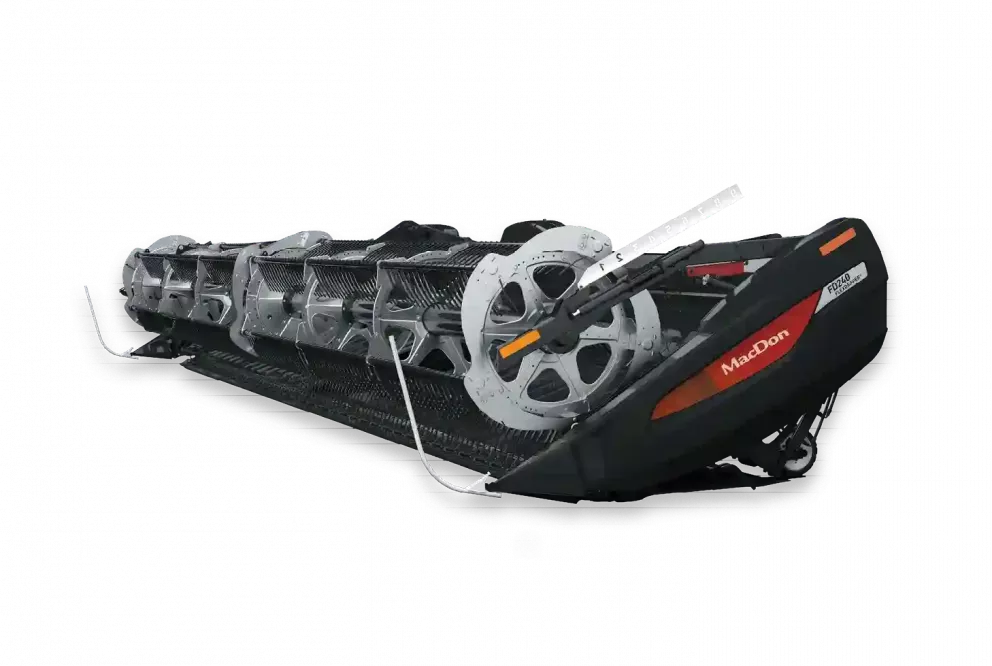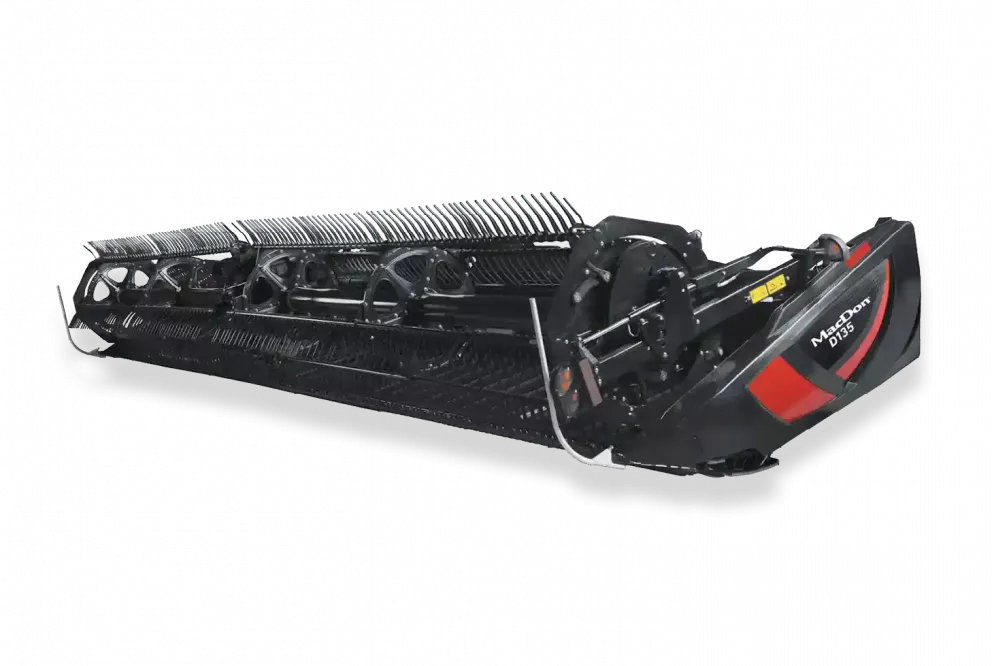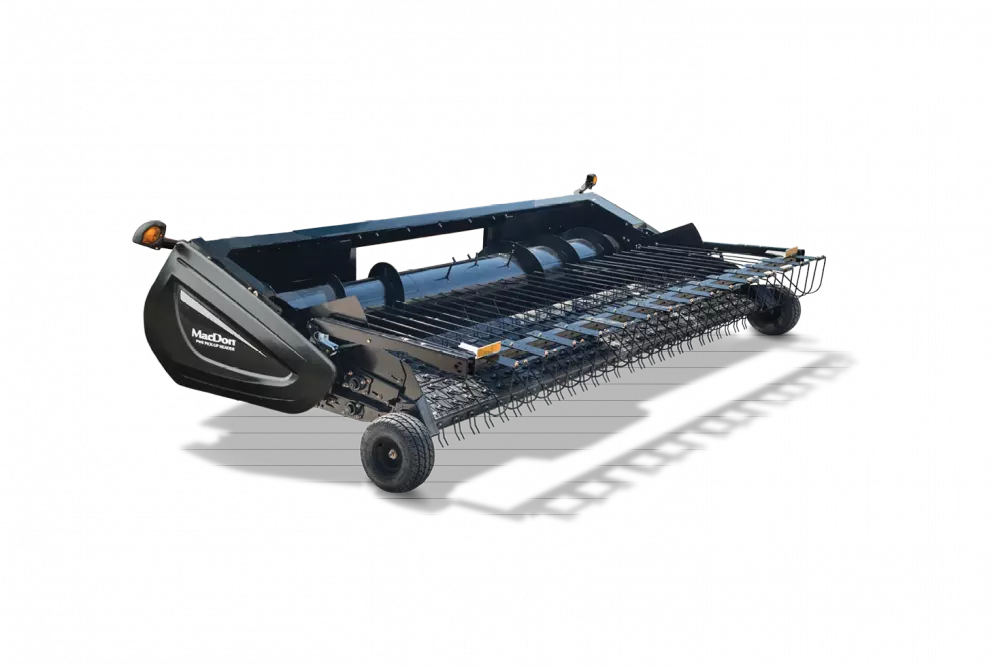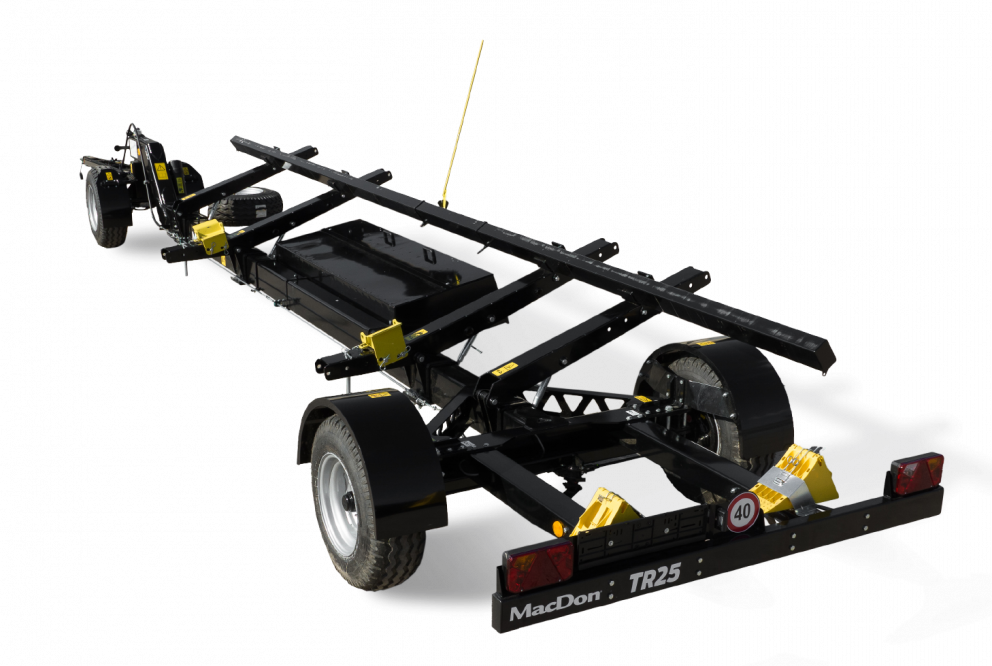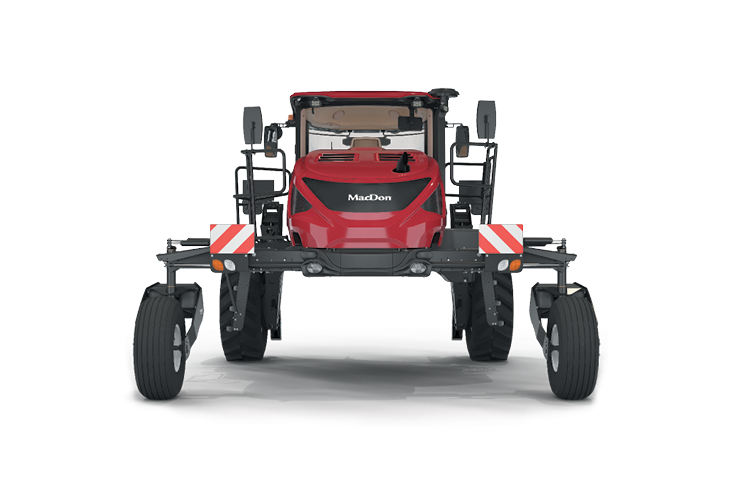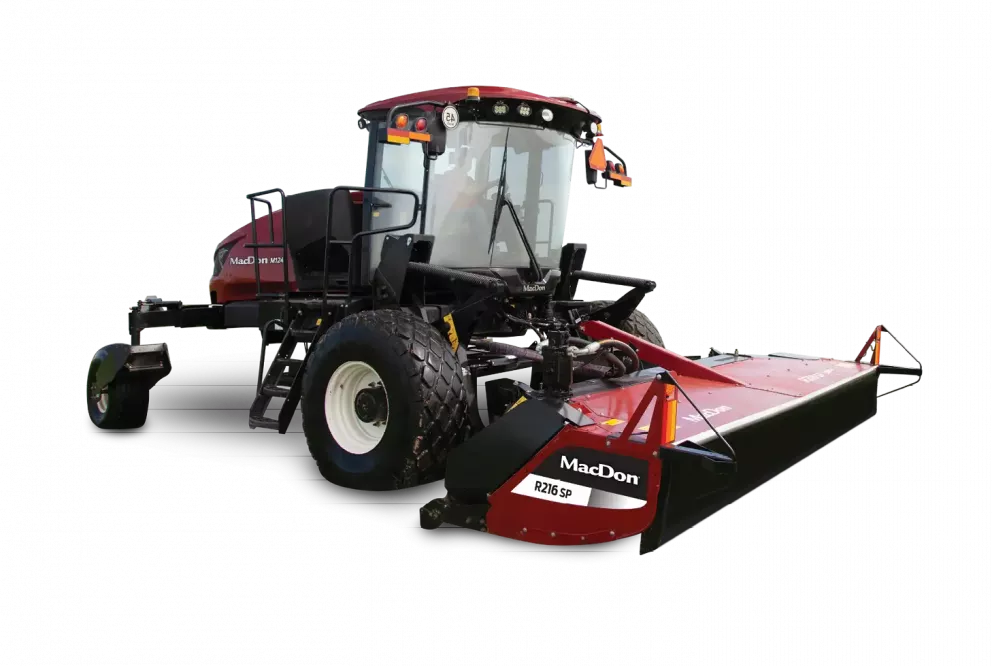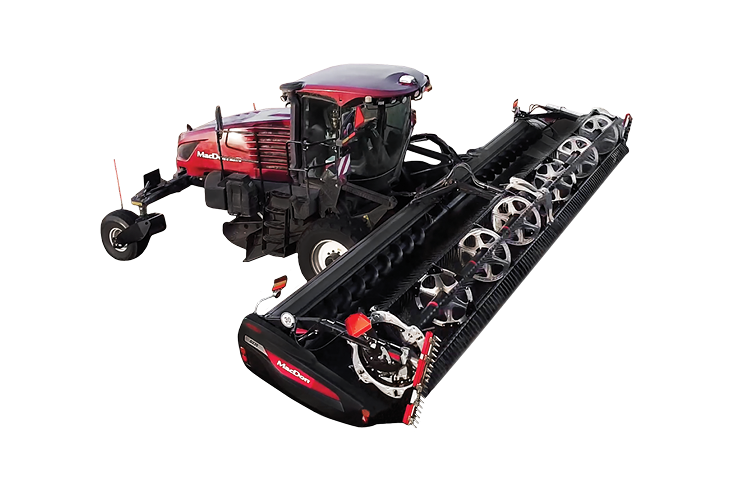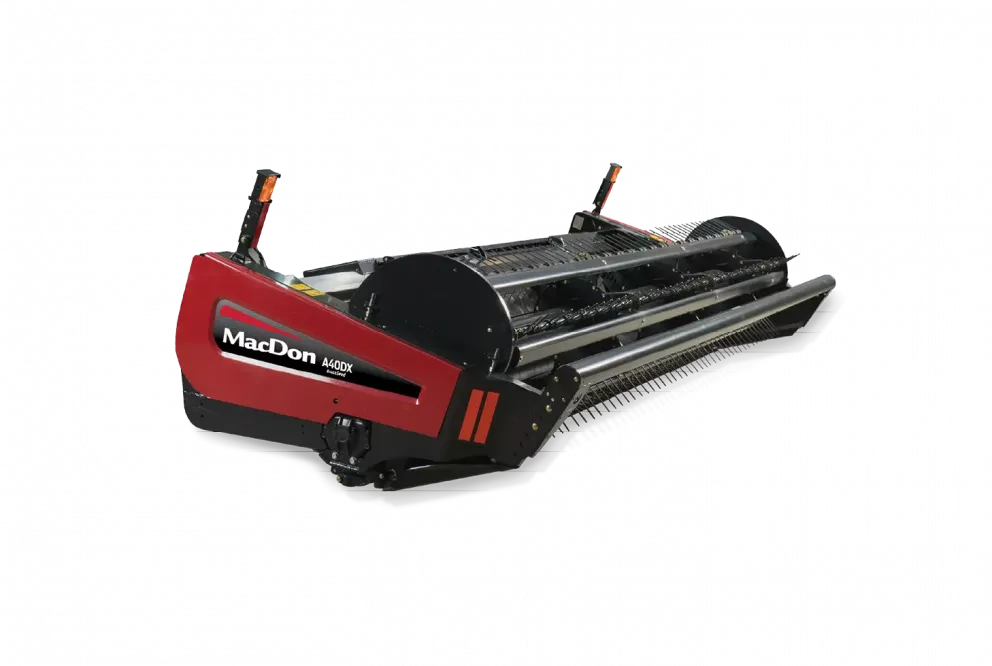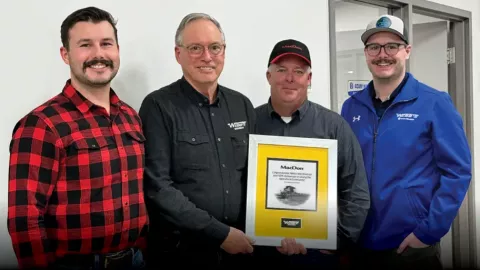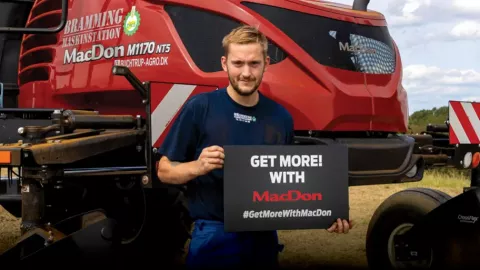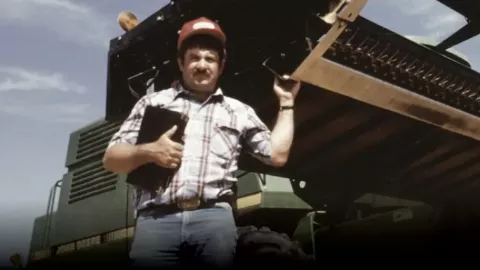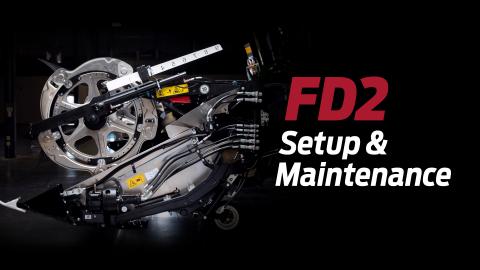The Right Way, The First Time
Michigan Farmer Pat Feldpausch has learned from experience to always put your best foot forward
One of the most valuable lessons Michigan farmer Pat Feldpausch ever learned came back in the 90s, early in his farming career. He had been trying to save time planting corn on neighbor Stan Dhelen’s farm without first tilling, but it wasn’t going so well.
“Now, sometimes no-tilling works, but that day I couldn’t go more than a couple hundred feet before having to stop to correct things. Well, one of those times I was behind the planter digging, and Stan comes up behind me and watches me a while. Then he asked ‘what are you doing?’ I said “I can’t get this thing to plant right. I should have come in here first with a soil finisher, then it would be planting perfect.” Stan then asked me something I’ve never forgotten: ‘why are you trying to do it the wrong way if you already know how to do it the right way?’"
Doing things the right way has become Feldpausch’s mantra managing his family’s 2,500 acre (1012 ha) farm of soybeans, corn and wheat, a thriving custom farming service, a Precision Planting Premier dealership, and as an independent sales representative for DuPont Pioneer. All four businesses are operated from Feldpausch’s farm located near Fowler, Michigan, about 25 miles northwest of the state’s capital Lansing. Feldpausch says that doing things the right way often means putting the customers' needs ahead of his own, and making sure that they are never left waiting or wanting.
“People might see me harvesting someone else’s beans before my own and ask ‘why are you doing that?’ And I’ll say ‘because this guy needs to plant wheat and if we don’t cut now we won’t get the crop in on time.’ Stan taught me that when you’re doing custom work, you do just as good a job as if you are doing your own. That teaching has always stuck with us.”
Feldpausch manages things with the help of his wife, Becky, and sons PJ (short for Patrick John) and Jake, plus eight dedicated employees. A daughter, Abbey, works in the medical field and a third son, Joseph, is still in high school and remains undecided about his future. It’s a business that keeps everyone running hard and contributing equally, especially during planting and harvesting when 100 hour weeks are the norm for everyone on the crew.
“We have a team approach here. Everyone needs to work together and every job has importance. We really appreciate everyone and what they do for us.”
The family’s custom business currently amounts to around 5,000 acres under their care, with a good portion of that more than just combining.
THEN A FRIEND BOUGHT A NEW COMBINE WITH A MACDON FLEXDRAPER® HEAD AND I WENT TO WATCH IT RUN. IT WAS LIKE ‘OH MY, WE HAVE TO HAVE ONE OF THOSE’. SHORTLY AFTER, WE PURCHASED OUR FIRST MACDON FLEXDRAPER.
“We have customers where we do everything for them: till, plant, fertilize, spray and harvest. There are a lot of dairies in our area with about 46,000 Holstein cows in our 24 square mile (62.2 sq Km) county. We do a lot of combining for those dairies which grow a lot of wheat, with the straw being baled for feed.”
“About nine years ago, shortly before I bought my first MacDon head, our customers asked if we could start cutting the wheat three inches off the ground to retain more straw. Now, we grow anywhere from 85 to 120 bushel wheat here, so cutting tight to the ground means a lot of extra straw through the combine.”
“We had been running competitive auger heads on our John Deere combines at the time, and we just couldn’t get the wheat to feed evenly with the auger. Then a friend bought a new combine with a MacDon FlexDraper® head and I went to watch it run. It was like ‘oh my, we have to have one of those’. Shortly after, we purchased our first MacDon FlexDraper.”
PJ supported the decision to go with MacDon FlexDrapers. He had worked on a custom crew out west that also used MacDon FlexDrapers and was very satisfied with the performance.
“I had cut for two years on a harvest crew, harvesting about 110,000 acres between Texas and Montana,” recalls PJ Feldpausch. “We ran nine combines out there, with me and another guy running MacDon heads and the rest of the crew running competitive drapers. The performance difference between the MacDon’s and the other headers was huge in our eyes. I was lucky to be given a combine with a MacDon at the beginning of the season, and the option to let someone else run it was never given for the rest of the season. I wasn’t about to let that happen.”
Now, nine years later, PJ says MacDon FlexDrapers have become an integral part of their business, allowing them to do the type of job their customers depend on.
“We’re a quality driven operation. I remember two years ago in the middle of soybean harvest Dad calling me to tell me that he had just seen a really poor job done by another custom cutter in a neighboring field. He said if we ever leave a field of soybeans looking like that when we finish a job, we will have to sell every piece of machinery because our business will be done.”
“Our MacDon headers do a superior job compared to others. The flexibility of how they work, the ease of the system and the lightness of the header; the even crop flow just allows us to run longer into the night and start earlier in the morning. If the moisture in the grain head is okay it really doesn’t matter what the stock is doing, because the cuttability of the MacDon is so much greater.”
For their own operation, about a third of the soybeans that the Feldpausch’s grow is destined to become Pioneer seed. Pat says that their FlexDrapers have proven to be indispensable for achieving maximum quality in the finished product.
“When you are harvesting soybeans for seed you can’t harvest them when they are too wet or too dry,” says Pat. “If they start thrashing hard you can’t just close the concave up and grind them out because you’ll crack the seed coat. You have to be very gentle with them, and that’s what we love about the MacDon’s. They feed and cut so evenly that our seed quality has actually gone up and we get paid premiums for quality.”
PJ adds that FlexDrapers have significantly decreased header loss or shelling of the pod, compared to harvesting with an auger.
“You don’t have the stalks rolling around or flying through the air, especially when you get into dry pod conditions. When there are short soybeans the FlexDraper lets us tilt the head forward, or if we get into down crop we can hug the ground within an inch and cut the crop off clean. I don’t know how much more seed the MacDon recovers, but it is higher.”
PJ says that their FlexDrapers are even saving them in maintenance and downtime, which is remarkable given the abundance of rocks they contend with in their area.
“You would think knives are knives and guards are guards, but they’re not. When we’re cutting close to the ground, we don’t shear knives off with the MacDon like we did with other headers. Although we do change out the bars probably twice a year with new ones, I bet we don’t change ten knife sections a year between our two machines. It is amazing how well these headers can run so close to the ground and still avoid damage flexing over rocks, dirt mounds and other debris found in the field.”
The Feldpausch’s passion for MacDon is also shared by one of their employees, Scott Cole. Before joining the Feldpausch’s, Cole had previous experience with draper headers and assumed they were all pretty much the same.
“My first experience running a MacDon was when I started working for Pat,” says Cole. “After my first day with the FlexDraper I said to myself ‘I’ll never run another draper again in my life if I have
a choice.’ A MacDon feeds better, cuts nicer and is so much more user friendly compared to what I used before.”
Cole says he has been particularly impressed by how well FlexDrapers perform when the elements turn difficult.
“I’ve run them in the rain quite a few times. Even the pouring rain just to get to the end of a field, and never once have I had a feeding problem.”
Performance like that led the Feldpausch’s to once again purchase FlexDrapers last summer when it was time to replace the old ones. Pat admits that they seriously considered competitive headers before making the decision, not because they had any serious complaints with their previous MacDon’s, but because of the level of thoroughness they put into all their equipment purchases.
“Every single decision we make is based on doing it right,” says Pat. “For example, we bought a new planting tractor last winter. We traveled to four different states looking for exactly the one we wanted. It was the same with our MacDon decision this year. We considered the competition, but we decided to go with MacDon again because of the way it feeds, how well it runs and how easy it is to maintain. As with all the equipment we have, we’ll always choose the higher quality, more dependable and longer lasting product.”
“It’s just as Stan Dhelen taught me; no matter how you have to go at it, always do it the right way and you will always be successful.”
